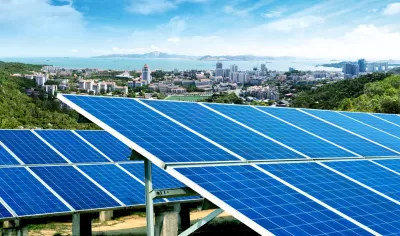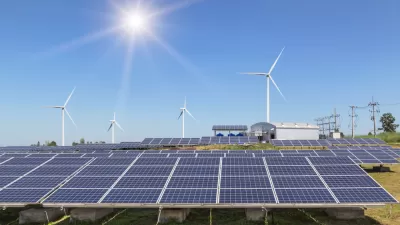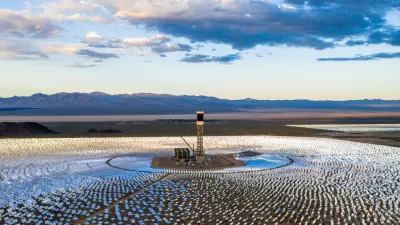California is setting records for the amount of solar energy it can’t use, but this cushion might be a good thing: it means the state won’t need to depend as heavily on fossil fuels as a stopgap.

The state of California has increased its solar energy production, and now it often has more than it can use. "The state’s fleet of solar farms and rooftop panels frequently generate more electricity than Californians use during the middle of the day — a phenomenon that has sent lawmakers and some climate advocates scrambling to find ways to save the extra sunlight rather than let it go to waste," Sammy Roth reports for the Los Angeles Times.
While this may seem wasteful, a study from the academic journal, Solar Energy, suggests it might actually be prudent to build oversupply into the system. "Solar power has gotten so inexpensive that overbuilding it will probably be the cheapest way to keep the lights on during cloudy or overcast days — cheaper than relying entirely on batteries," Roth explains. Maintaining an oversupply of power is nothing new for utilities, who always need to maintain some cushion. Generating that cushion with solar energy, is a new practice for utilities.
FULL STORY: California has too much solar power. That might be good for ratepayers

Alabama: Trump Terminates Settlements for Black Communities Harmed By Raw Sewage
Trump deemed the landmark civil rights agreement “illegal DEI and environmental justice policy.”

Planetizen Federal Action Tracker
A weekly monitor of how Trump’s orders and actions are impacting planners and planning in America.

Why Should We Subsidize Public Transportation?
Many public transit agencies face financial stress due to rising costs, declining fare revenue, and declining subsidies. Transit advocates must provide a strong business case for increasing public transit funding.

Understanding Road Diets
An explainer from Momentum highlights the advantages of reducing vehicle lanes in favor of more bike, transit, and pedestrian infrastructure.

New California Law Regulates Warehouse Pollution
A new law tightens building and emissions regulations for large distribution warehouses to mitigate air pollution and traffic in surrounding communities.

Phoenix Announces Opening Date for Light Rail Extension
The South Central extension will connect South Phoenix to downtown and other major hubs starting on June 7.
Urban Design for Planners 1: Software Tools
This six-course series explores essential urban design concepts using open source software and equips planners with the tools they need to participate fully in the urban design process.
Planning for Universal Design
Learn the tools for implementing Universal Design in planning regulations.
Caltrans
Smith Gee Studio
Institute for Housing and Urban Development Studies (IHS)
City of Grandview
Harvard GSD Executive Education
Toledo-Lucas County Plan Commissions
Salt Lake City
NYU Wagner Graduate School of Public Service





























